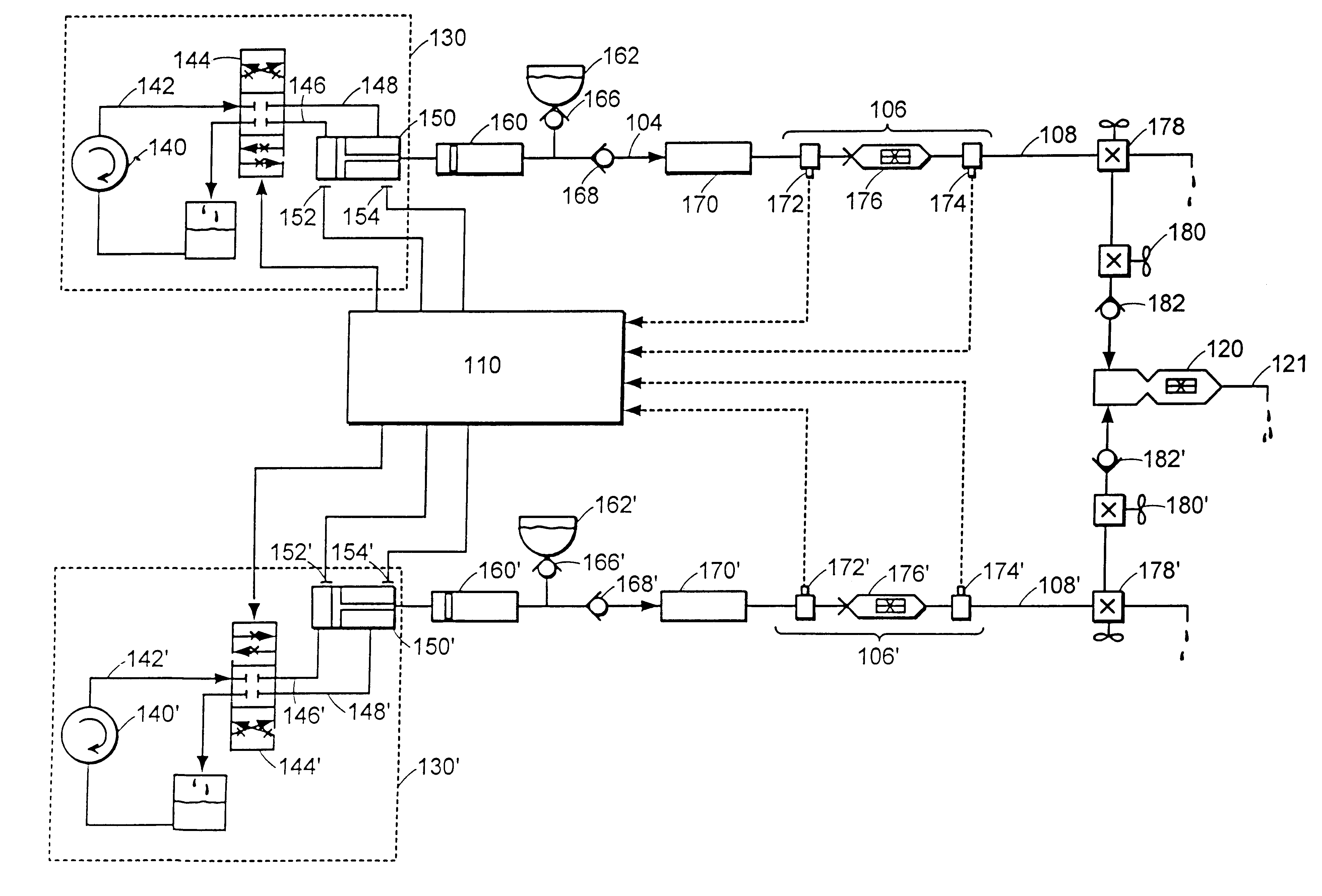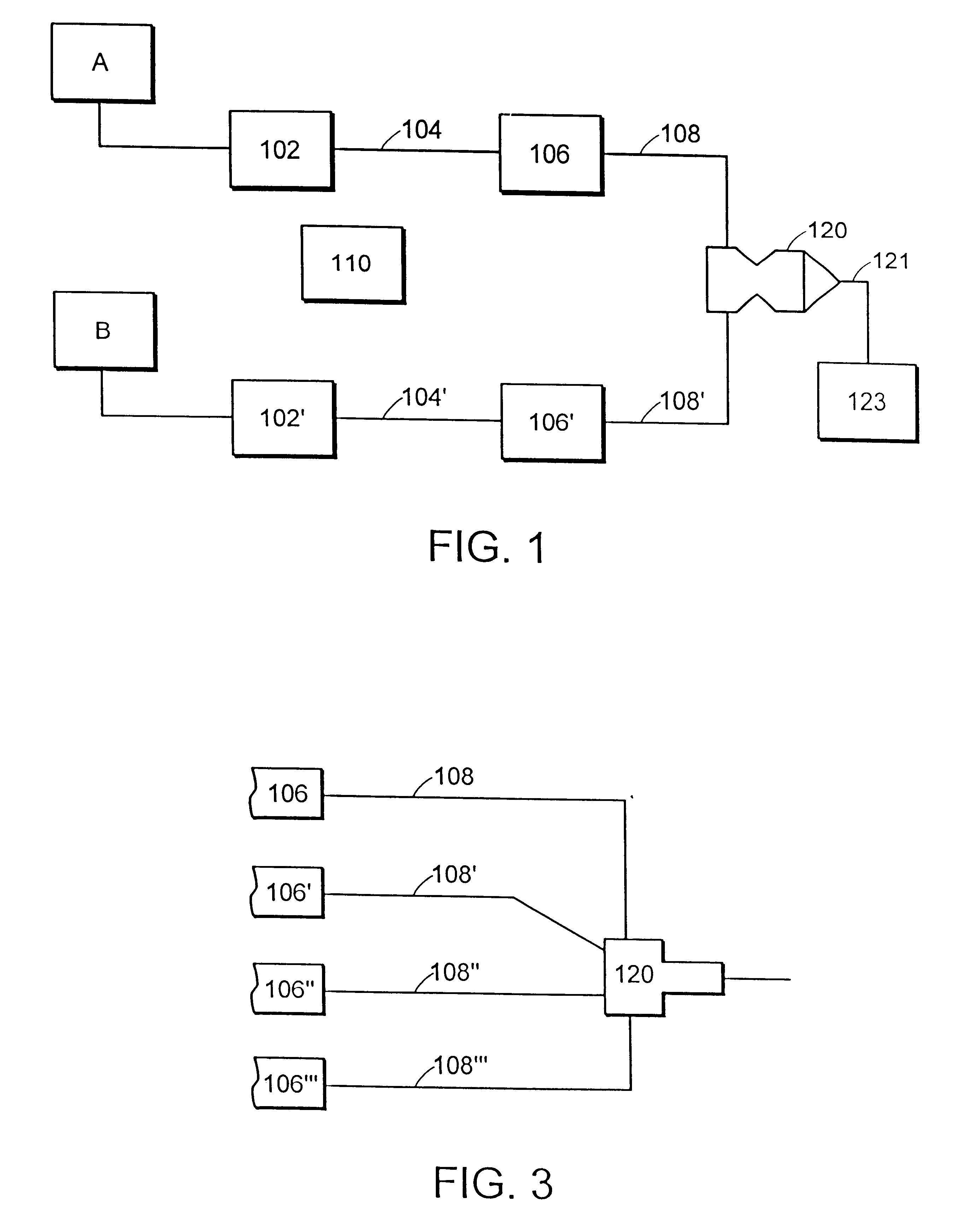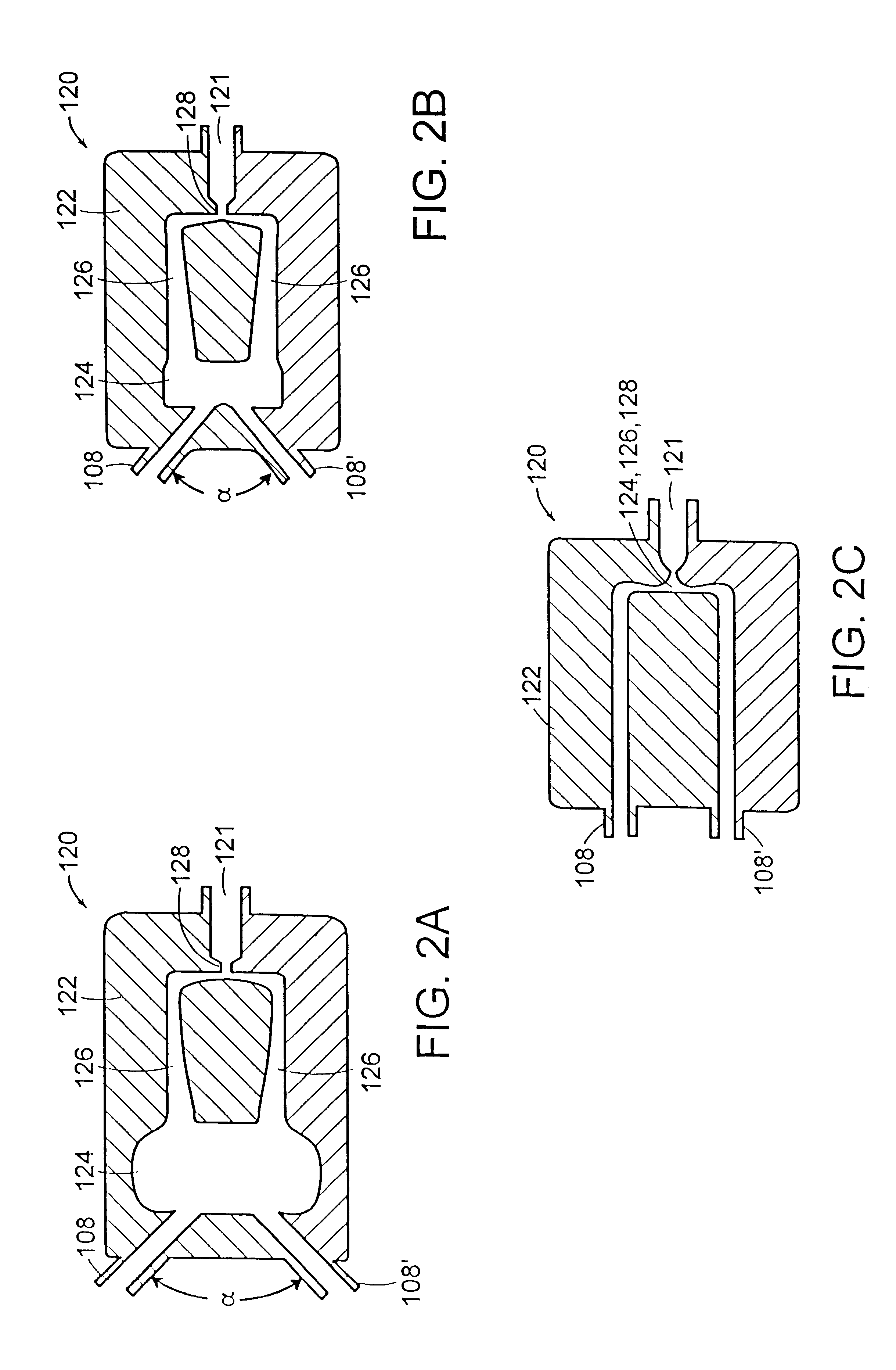Multiple stream high pressure mixer/reactor
a mixer/reactor, multi-stream technology, applied in the direction of magnesium compounds, metal/metal-oxide/metal-hydroxide catalysts, silicates, etc., can solve the problems of low efficiency, low efficiency, and low efficiency of output products, so as to achieve less than optimal properties, less than optimal performance, and high intensity
- Summary
- Abstract
- Description
- Claims
- Application Information
AI Technical Summary
Benefits of technology
Problems solved by technology
Method used
Image
Examples
example 2
Preparation of an Aluminosilicate Gel Using the Dual Stream Mixer / Reactor of the Invention
A solution containing sodium silicate and a small amount of aluminum (2.68 mol Si / liter, 0.048 mol Al / liter, 5.76 mol Na / liter) was added to the reservoir of the first pump. A solution of Al.sub.2 (SO.sub.4).sub.3 (1.40 mol Al / liter) was added to the reservoir of the second pump. These solutions at ambient temperature were pumped at 14-15 kpsi operating pressure, at 290-300 ml / minute each, in the high pressure dual stream reactor (FIG. 2C). The product discharged at the exit of the chamber had a pH of 7.2 and was a thick, white gel. This gel was washed with distilled, de-ionized water to remove sodium sulfate salts, filtered, and subsequently dried at 110-120.degree. C. This material was then analyzed by .sup.29 Si NMR. The NMR spectrum is provided in FIG. 9. The .sup.29 Si spectrum consists of a broad peak centered at -87.15 ppm with a half width at half maximum of 14.24 ppm. The Si / Al of the ...
example 3
Synthesis of Aluminosilicate Mullite Precursors Using the Dual Stream Mixer / Reactor According to the Invention
500 ml of a diluted colloidal SiO.sub.2 sol and 2 ml of 30 wt % aqueous ammonia were added to the reservoir of the first pump. To the reservoir of the second pump was added 500 ml of a colloidal Al.sub.2 O.sub.3 sol, undiluted. The atomic Al / Si ratio of the combined solutions was 3:1. These solutions were mixed in the reaction chamber that is shown in FIG. 2C. The solutions were fed at a rate of 300 ml / minute (each), and with a pressure drop of between 10 kpsi and 11 kpsi across the reaction chamber. A viscous, gel-like product was discharged through the outlet of the interaction chamber. This material was recovered and dried at 120.degree. C. without washing. It is referred to as product A.
example 4
Precipitation of Cu / Zn / Al Hydroxycarbonate with 25% Al and Cu / Zn=3.0 Using the Dual Stream Mixer / Reactor of the Invention
A solution comprising 0.35 M Al(NO.sub.3).sub.3.9H.sub.2 O, 0.80 M Cu(NO.sub.3).sub.2.2.5H.sub.2 O, and 0.27 M Zn(NO.sub.3).sub.2.6H.sub.2 O was added to the reservoir of the first pump and a solution containing 3.3 M NaHCO.sub.3 was added to the reservoir of the second pump. The temperature of both solutions was maintained at 60.degree. C. The pump pressures were equal to 15 kpsi during operation, corresponding to a flow rate of 300 ml / min for each pump. The collected slurry product was mixed in a stirred vessel at 60.degree. C. for at least 1 hour (aging). Then, the solids were filtered, washed with water to remove sodium and nitrate ions, and dried at 95.degree. C. An X-ray powder diffraction pattern of the solid product is presented in FIG. 11A and shows that the solid product is pure hydrotalcite, without any malachite impurity.
PUM
| Property | Measurement | Unit |
|---|---|---|
| pressure | aaaaa | aaaaa |
| velocity | aaaaa | aaaaa |
| pressures | aaaaa | aaaaa |
Abstract
Description
Claims
Application Information
 Login to View More
Login to View More - R&D
- Intellectual Property
- Life Sciences
- Materials
- Tech Scout
- Unparalleled Data Quality
- Higher Quality Content
- 60% Fewer Hallucinations
Browse by: Latest US Patents, China's latest patents, Technical Efficacy Thesaurus, Application Domain, Technology Topic, Popular Technical Reports.
© 2025 PatSnap. All rights reserved.Legal|Privacy policy|Modern Slavery Act Transparency Statement|Sitemap|About US| Contact US: help@patsnap.com



